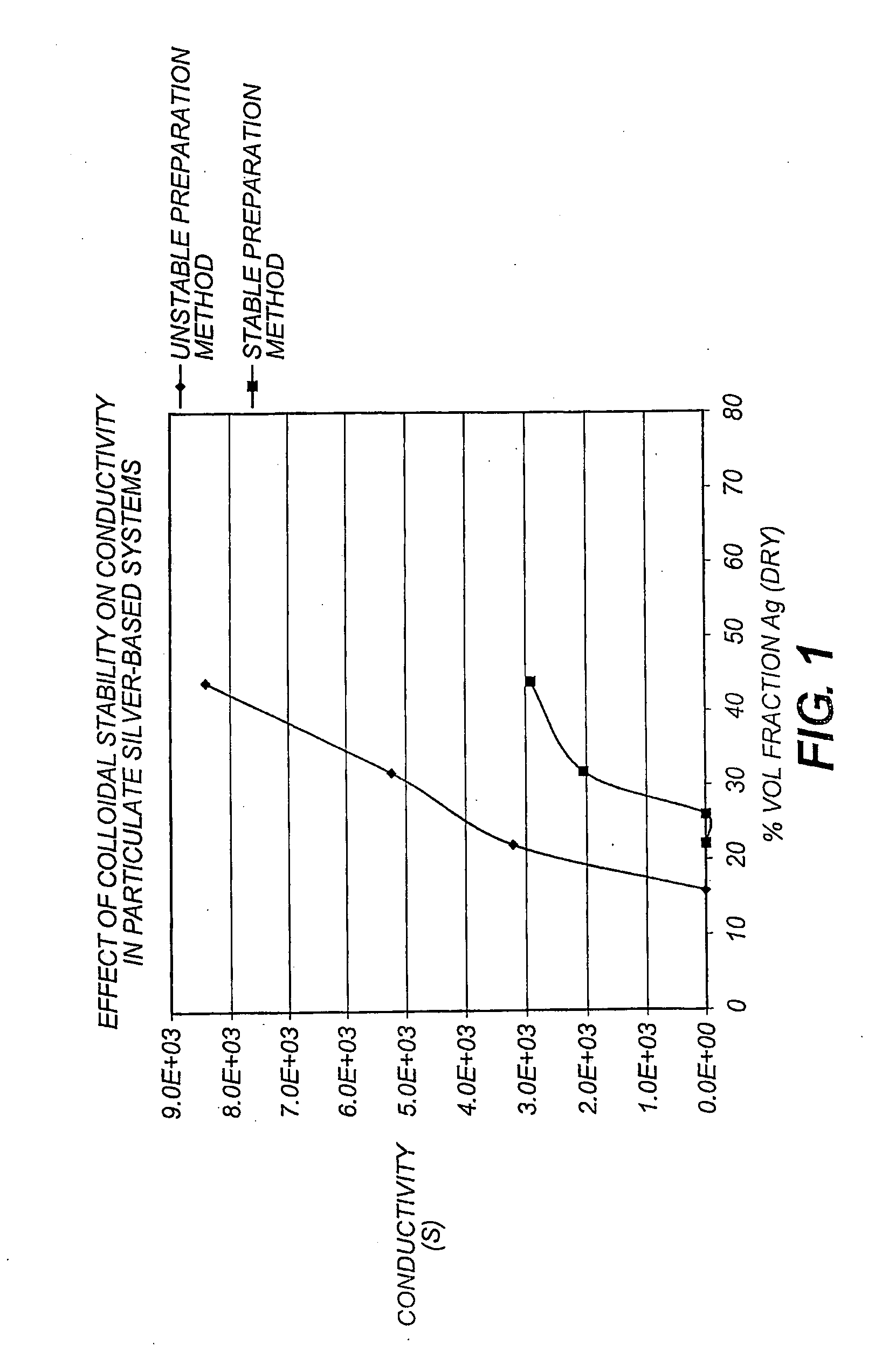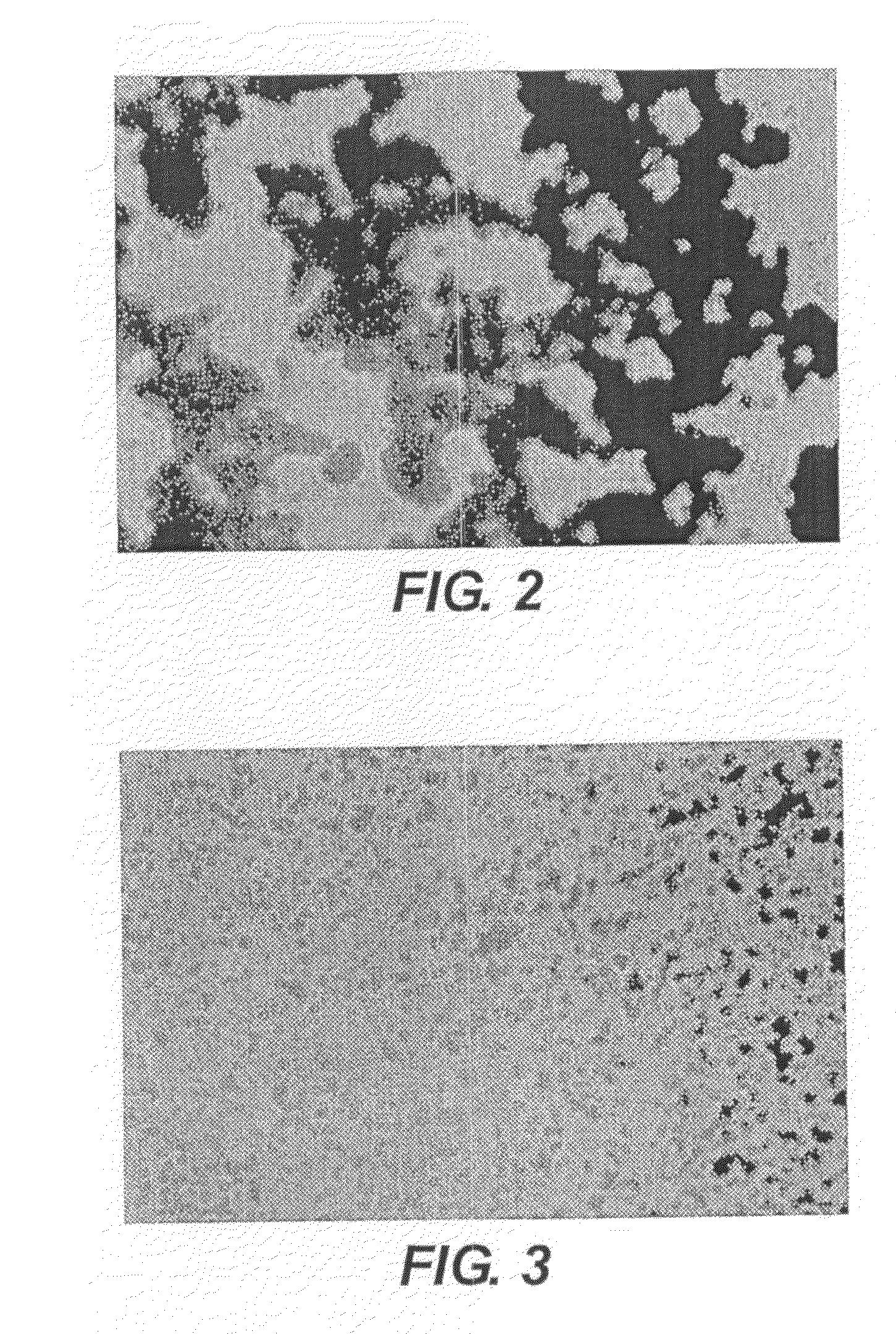Conductive composite material
a composite material and conductive technology, applied in the field of composite materials, can solve the problems of high cost, broken conduction path, multi-stage process, time-consuming and costly heating steps, etc., and achieve the effect of high transparency
- Summary
- Abstract
- Description
- Claims
- Application Information
AI Technical Summary
Benefits of technology
Problems solved by technology
Method used
Image
Examples
example 2
[0027]A solution with 7.8% w / w silver flakes, 0.16% w / w Surfynol CT131 and 2.4% w / w Type IV gelatin was prepared. The gelatin was soaked in the required water and was gradually melted with regular stirring in a water bath at 45° C. The silver flakes were added to the solution and the mixture was vigorously stirred for around 15 minutes on a magnetic stirrer and then placed in an ultrasonic bath for around 15 minutes. Surfynol CT131 was added and the mixture was again stirred for around 15 minutes on the magnetic stirrer and then placed in the ultra sonic bath for 15 minutes. Finally, the Alkanol XC was added at 0.02% w / w and the melt stirred thoroughly. The mixture was hand coated at a wet thickness of 50 μm to give a final dry layer with 26% v / v silver and a thickness of 5.3 μm. The coatings were allowed to dry in air at room temperature and were then investigated using the optical microscope (see FIG. 3). In this case, discrete, colloidally stable silver particles are present in t...
PUM
| Property | Measurement | Unit |
|---|---|---|
| Flexibility | aaaaa | aaaaa |
| Electrical conductor | aaaaa | aaaaa |
| Metallic bond | aaaaa | aaaaa |
Abstract
Description
Claims
Application Information
 Login to View More
Login to View More - R&D
- Intellectual Property
- Life Sciences
- Materials
- Tech Scout
- Unparalleled Data Quality
- Higher Quality Content
- 60% Fewer Hallucinations
Browse by: Latest US Patents, China's latest patents, Technical Efficacy Thesaurus, Application Domain, Technology Topic, Popular Technical Reports.
© 2025 PatSnap. All rights reserved.Legal|Privacy policy|Modern Slavery Act Transparency Statement|Sitemap|About US| Contact US: help@patsnap.com


